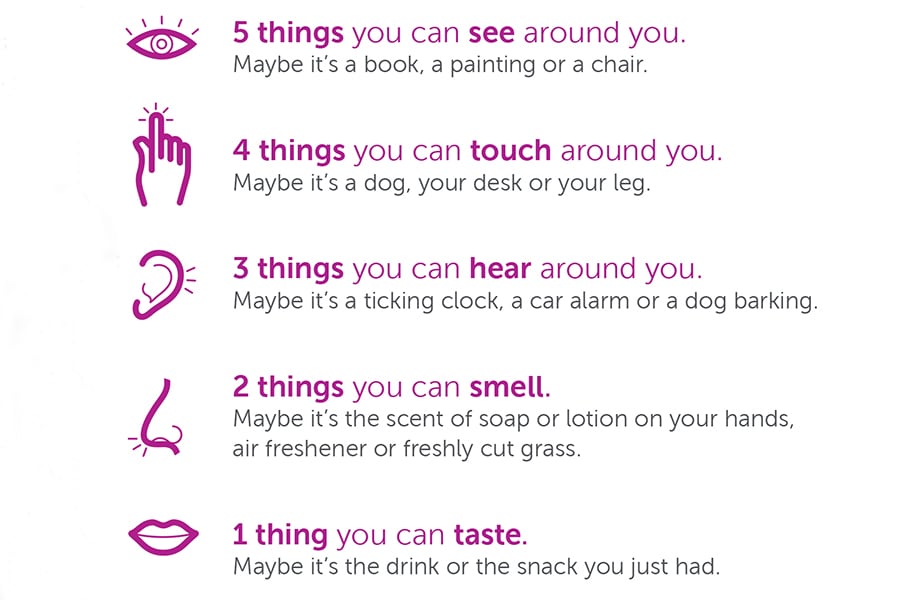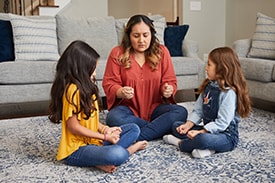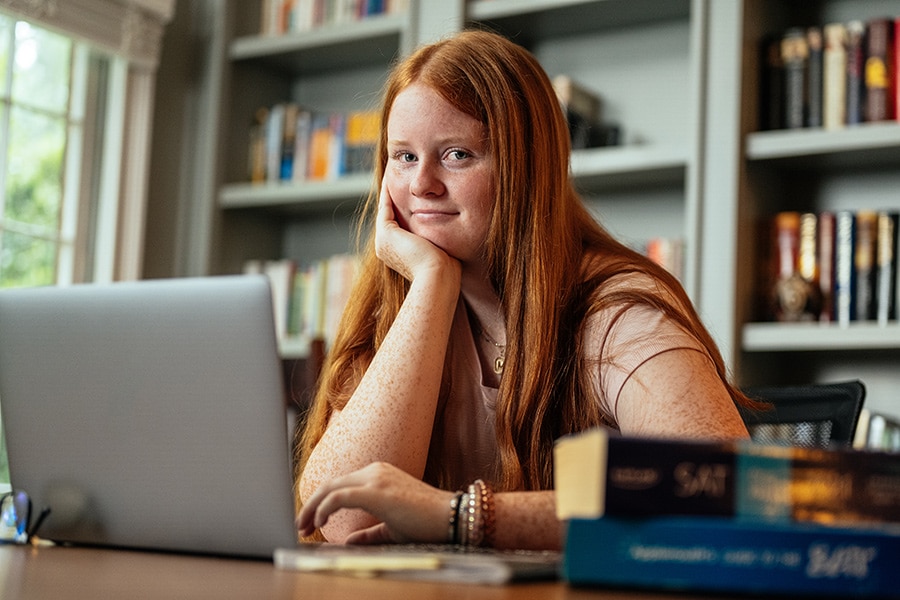Practicing Guided Imagery
As kids grow older, they face new stressors and challenges. By helping your child develop healthy coping skills (tools to help them manage their feelings and reduce stress), you’re helping them become more resilient (better able to handle life’s ups and downs).
Use the handout and video below to help teach and practice guided imagery as a coping skill.
Why practice guided imagery?
Our minds are powerful and we can use our imagination to visualize almost anything. This relaxation exercise uses words, images and all 5 senses to help move attention away from worry and stress to a more relaxed state.
Note: It is difficult to learn something new when we are anxious, angry or distracted. Teaching and practicing coping skills when everyone is calm gives us a variety of tools we can use to manage our feelings and reduce stress.
How to practice guided imagery
- Find a comfortable place to sit or lie down and, if you feel comfortable, close your eyes.
- Take a few deep breaths in through your nose and out through your mouth.
- Imagine yourself in a place where you feel safe, happy, and comfortable. This might be a favorite place you go, somewhere you have been before, or somewhere you’ve completely made up. It’s up to you.
- Once you have picked out a place, imagine yourself there.
- Think about every detail that makes this place special for you.
- What do you see?
- What do you hear?
- What can you touch?
- What do you smell?
- What do you taste?
- Take a few moments and notice how your body feels to enjoy your time in this place.
- When it is time to leave, know that you can return here any time, wherever you are, whenever you need to feel calm.
- Over the next few seconds, take a deep breath in through your nose and out through your mouth. Slowly open your eyes, and notice how your body feels. Are your muscles relaxed? Is your mind calm?
Tips for using guided imagery
Trying something new can be uncomfortable, and it may not always “work” the first time. And what works for one child may not work for another. Explore different approaches and ideas until you find what works.
Here are some ways to help your child use guided imagery:
- Help your child think of times when this strategy might be most helpful, such as when they feel anxious or angry before a big event or before bedtime.
- If your child is struggling to think of a safe place, ask them questions like:
- When was the last time you felt really happy?
- What was happening during that time?
- Where were you?
- If your child is struggling to imagine a place, encourage them to draw or paint an image of it on paper. They can focus on their painting or drawing to help them identify details of their special place.
Did you know that many athletes and performers use coping strategies like these before big games and performances to help them relax and focus?
Coping strategies, like guided imagery, are also helpful for adults. Practicing coping strategies is a great way to take care of yourself, be more present and model healthy ways to manage stress.




